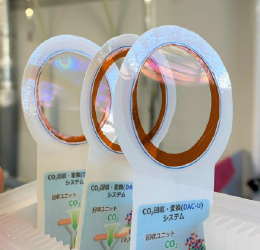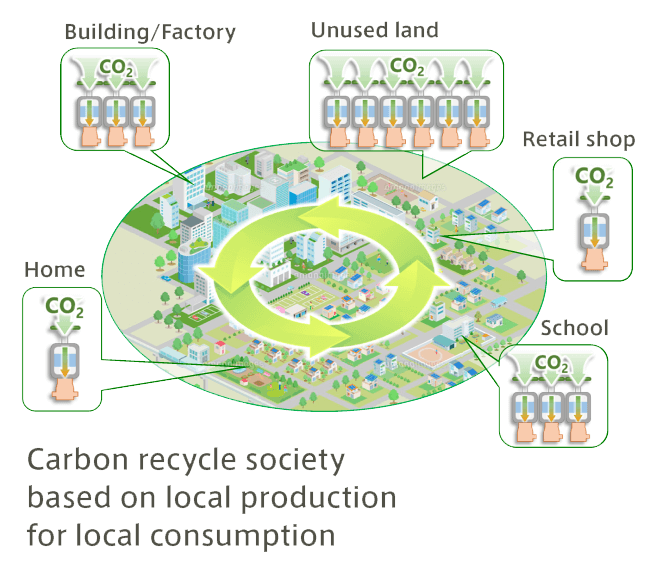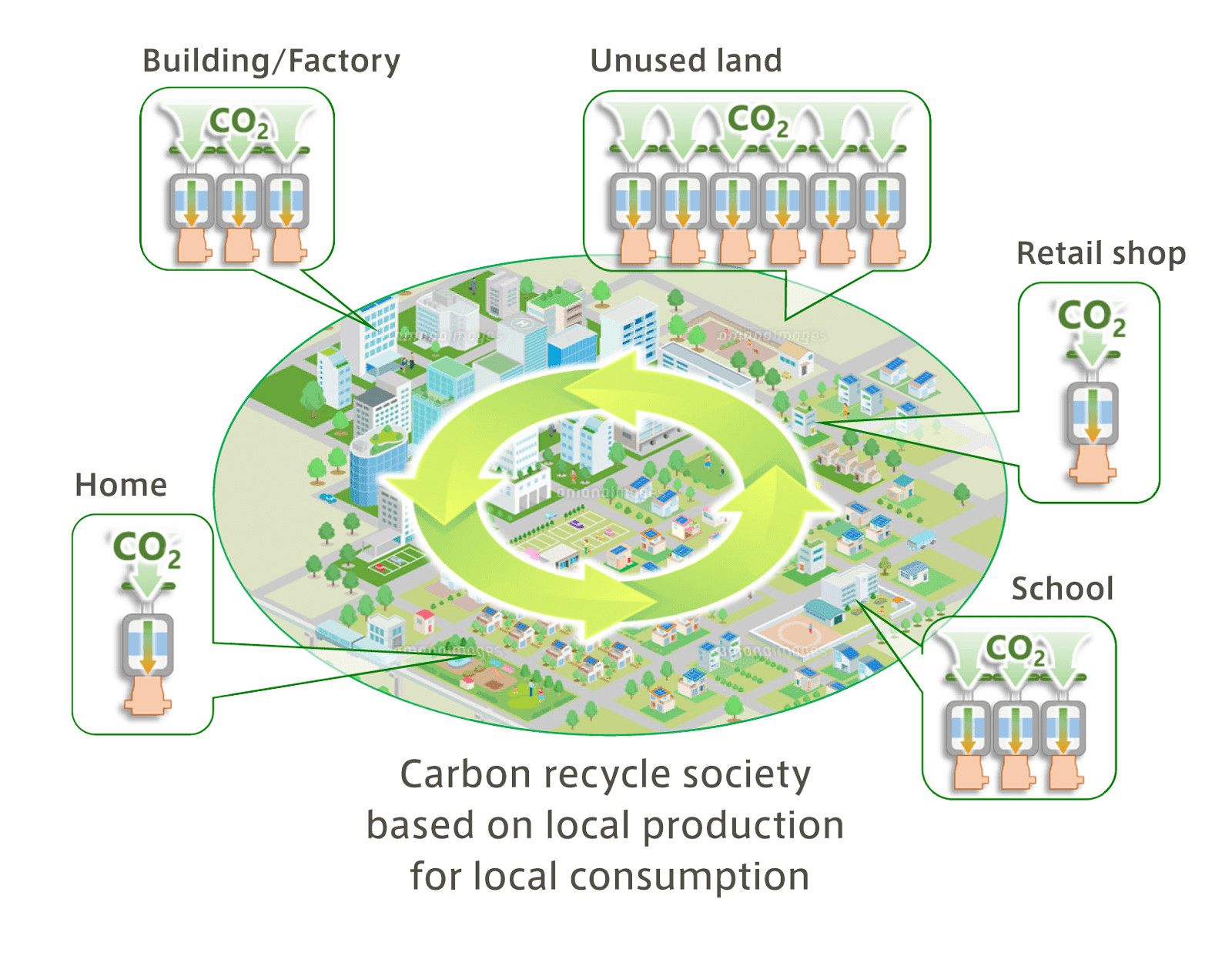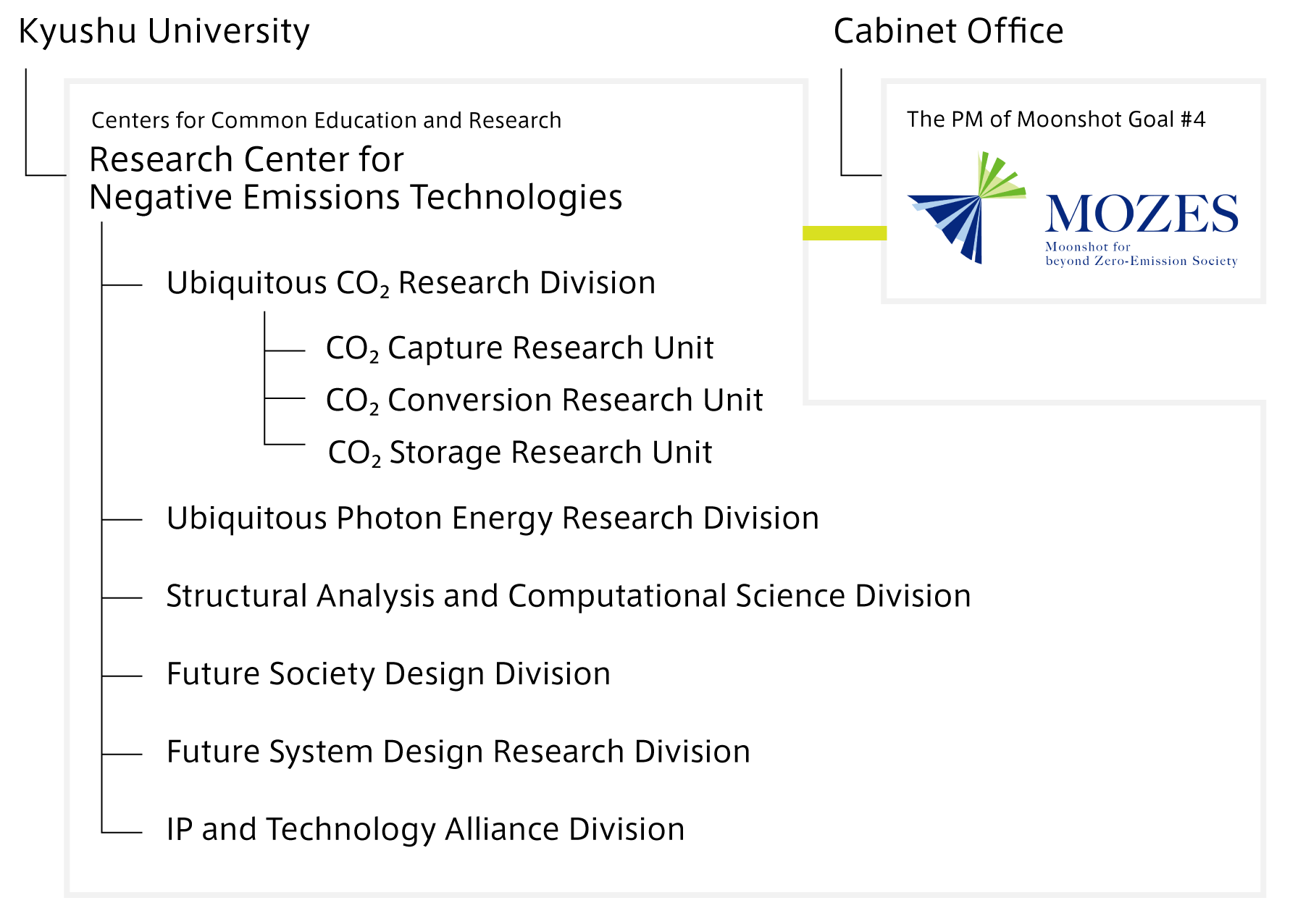About
Research Overview
Purpose of the Research
This center aims to develop negative emissions technologies of greenhouse gases, i.e., developing technologies for CO₂ capture directly from the atmosphere, conversion and storage of the captured CO₂, and utilization of light as energy. CO₂ should be captured from the air anywhere since the air exist ubiquitously on the earth. This ubiquitous nature will realize the construction of an energy-robust society through Local production Local consumption of carbon resources and contribute to the control of global warming by underground storage of excess emissions.
The goals of this research center are to solve pressing issues that need to be addressed globally, and smooth implementation in society is also important. For this purpose, international and industrial collaborations are indispensable, and it is important to provide interfaces for close collaboration and discussion between industry, government and academia. Therefore, the center will play a role as an interface to promote future collaborative activities.
The research project of “Moonshot for beyond Zero-Emission Society (MOZES) “is suppoted by the Moonshot Research and Development Program launched by the Cabinet Office of Japan. MOZES creates Direct Air Capture and Utilization (DAC-U) system, which is a integration of a membrane separation and an electro/thermochemical CO₂ conversion units, to manage CO₂ from capturing atmospheric CO₂ to carbon fuel production.


Research contents
In order to provide solutions to global warming issues and establish a carbon resource recycling society, MOZES will contribute to developing technologies for “local production for local consumption” of CO₂ by distributing a small and scalable CO₂ capture and conversion (DAC-U) system. Specifically, we will design and assemble CO₂ capture and utilization units according to facility scales, such as homes and factories, and place DAC-U systems everywhere in society to build a carbon-recycling society starting from a small scale approach.
In order to build a recycling society with theDAC-U system, it requires a variety of researches, such as membrane development for efficient CO₂ capture, chemical conversion of CO₂, and technologies for safe storage of CO₂ underground. Furthermore, it is necessary to verify and visualize such a future society from social-, financial-, and design engineering perspective.
In thisCenter, experts from various fields of Kyushu University and overseas researchers are working together to conduct researches in eight divisions.


Management Structure
Organization Chart


Leading Members
-
Director
Shigenori Fujikawa
Professor
-
Associate Director
Miho Yamauchi
Professor
-
Ubiquitous CO₂ Research Division Head
Shigenori Fujikawa
Professor
-
Ubiquitous Photon Energy Research Division Head
Nobuo Kimizuka
Professor
-
Structural Analysis and Computational Science Division Head
Ken Onda
Professor
-
Future Society Design Division Head
Andrew Chapman
Associate Professor
-
Future System Design Research Division Head
Yoshito Ogata
Professor
-
IP and Technology Alliance Division Head
Shigenori Fujikawa
Professor



